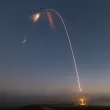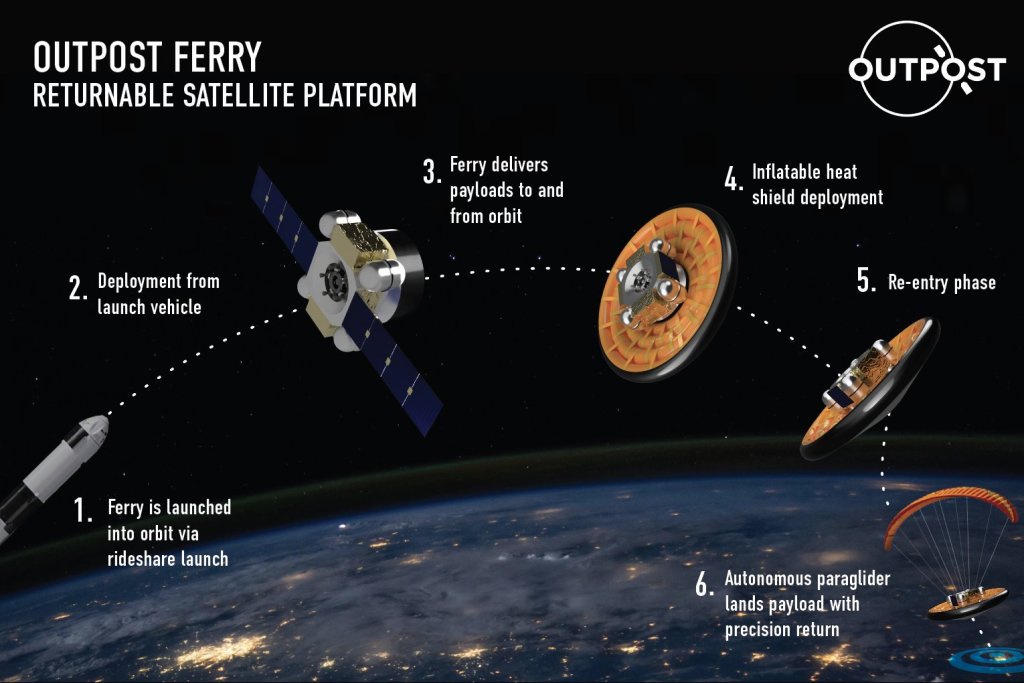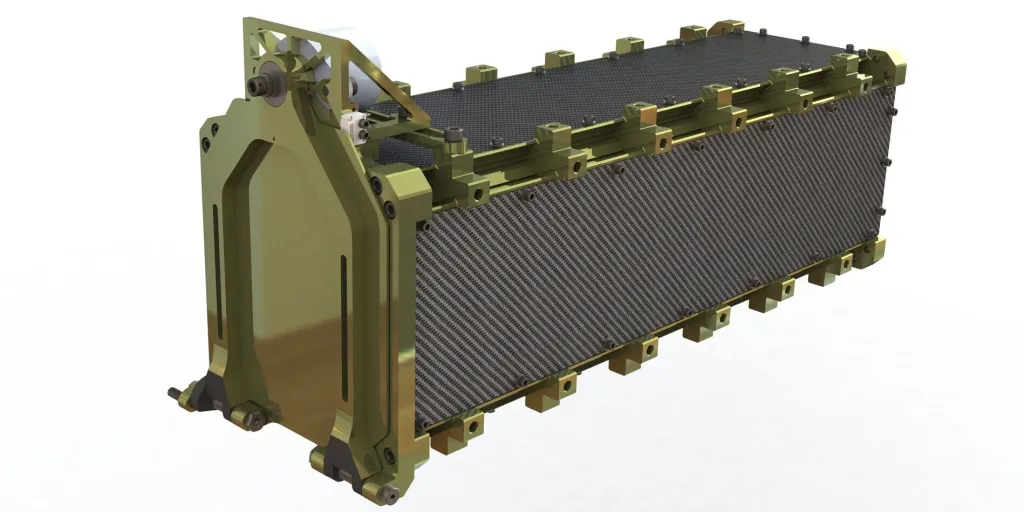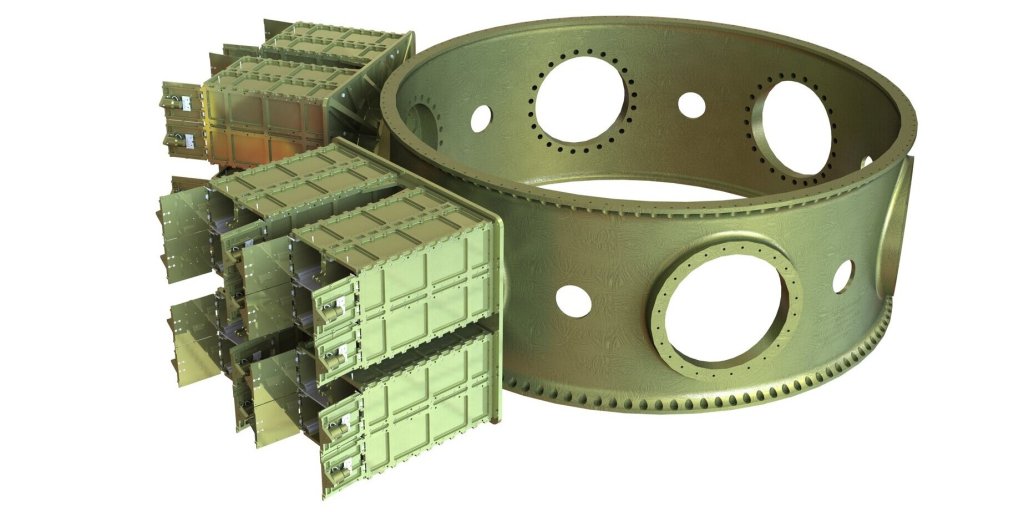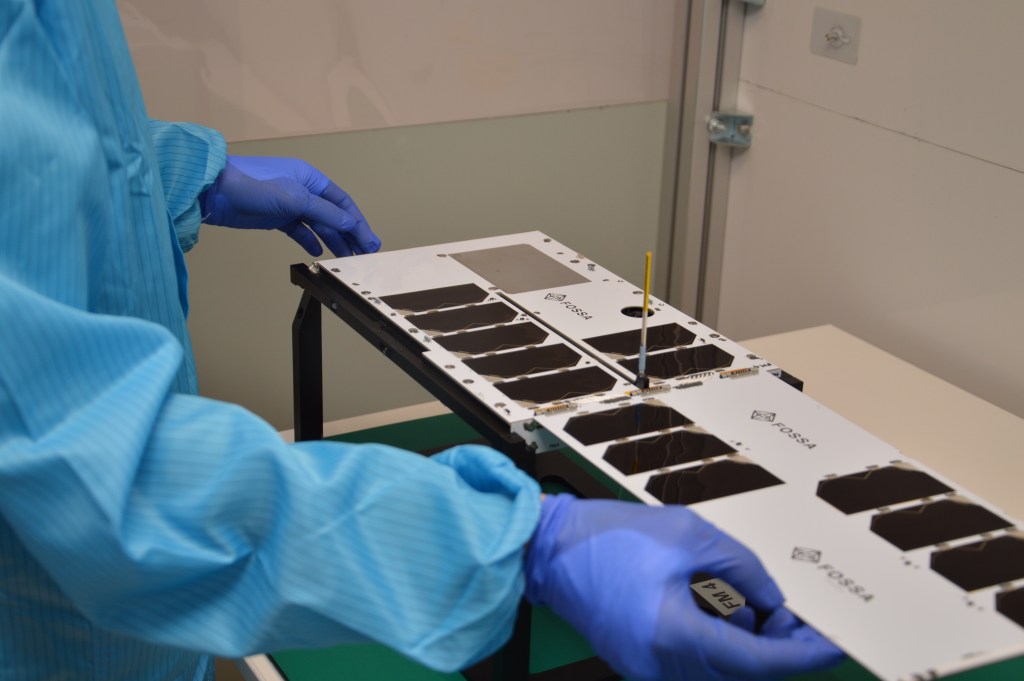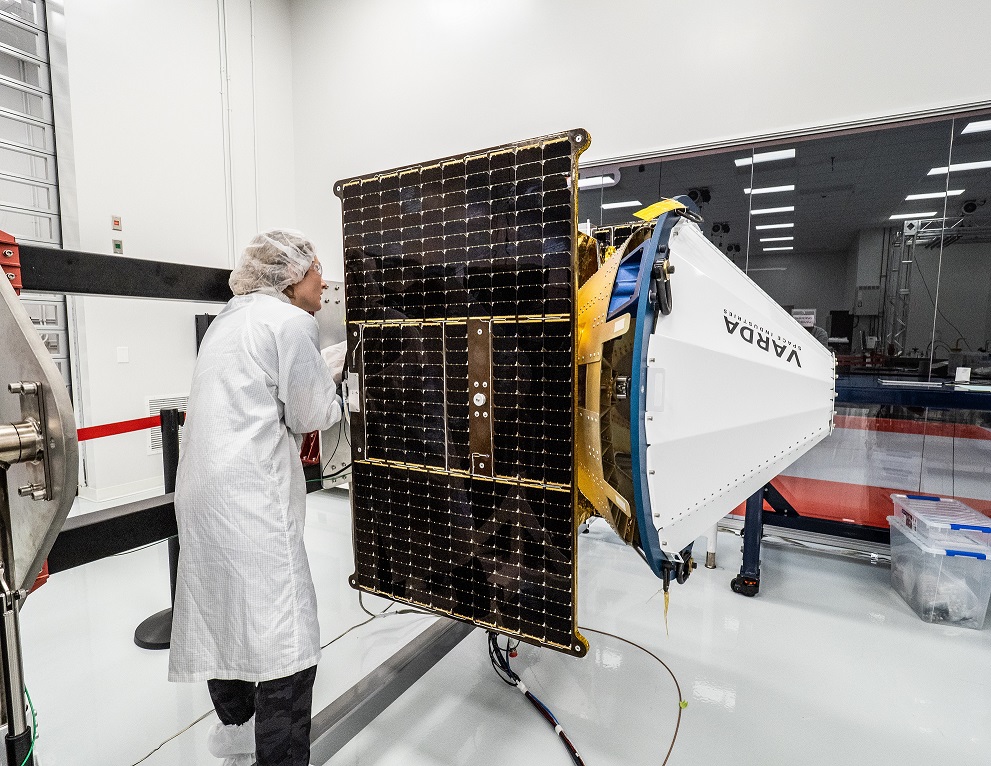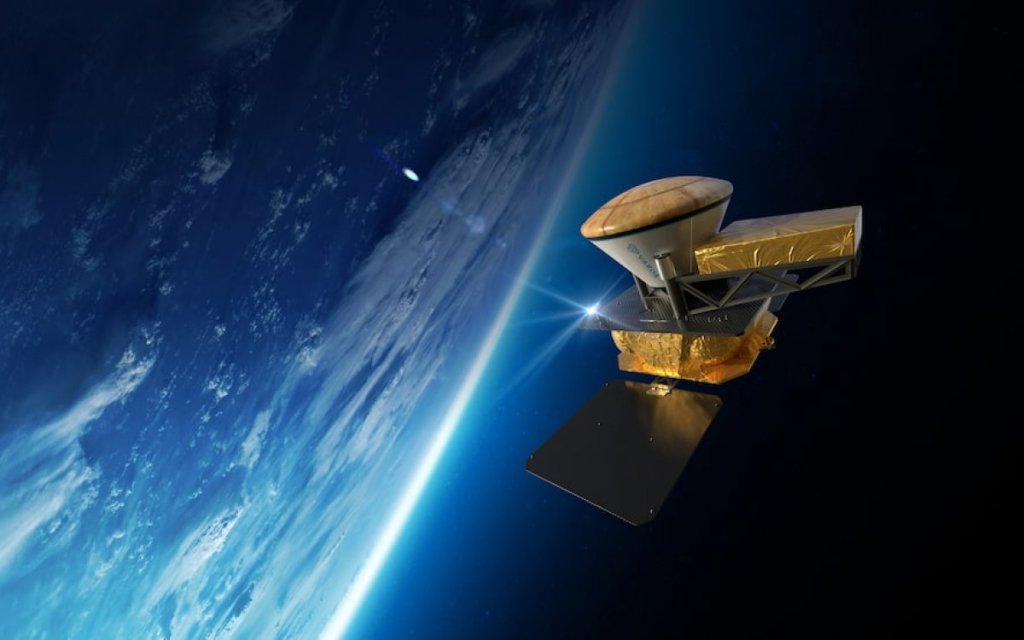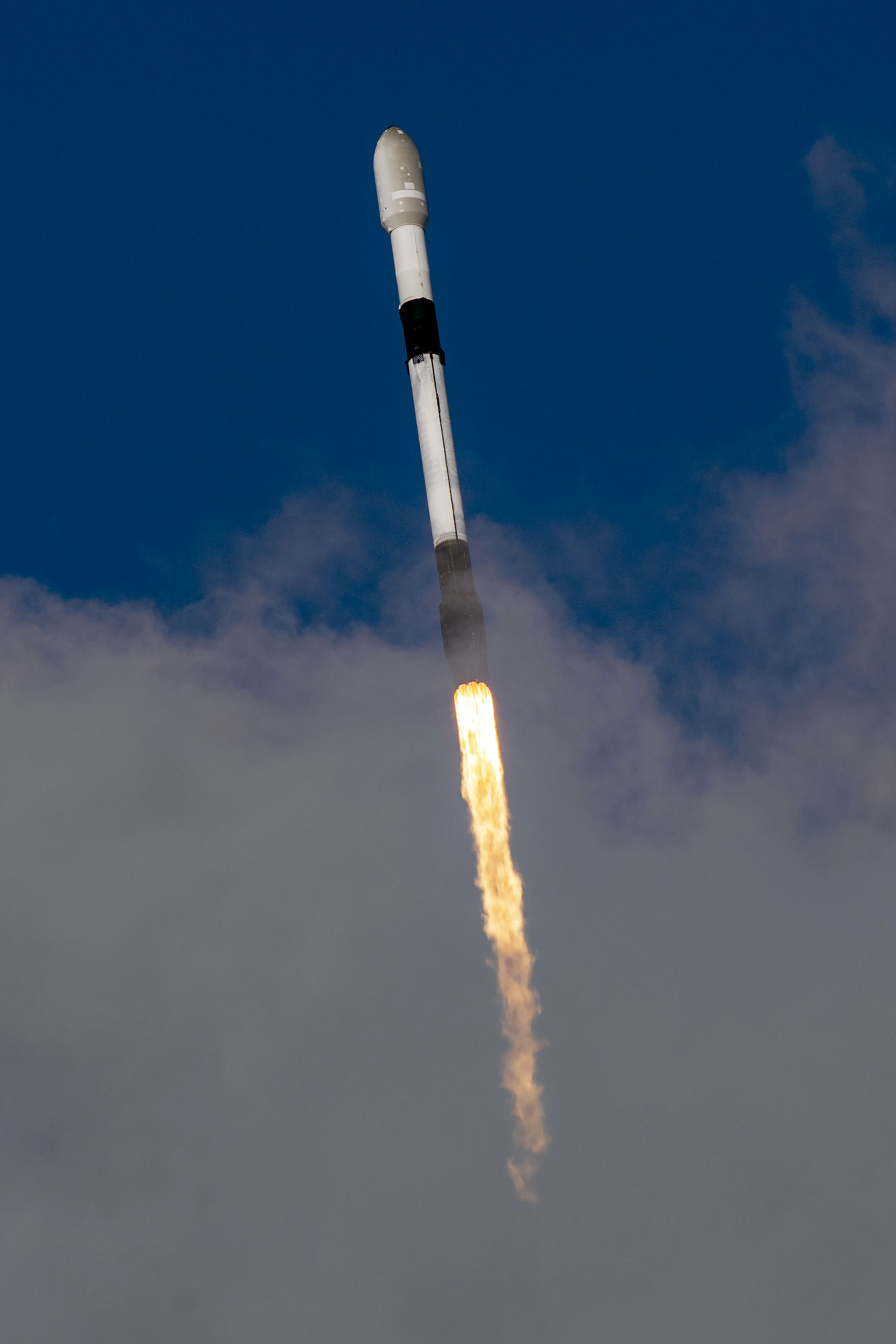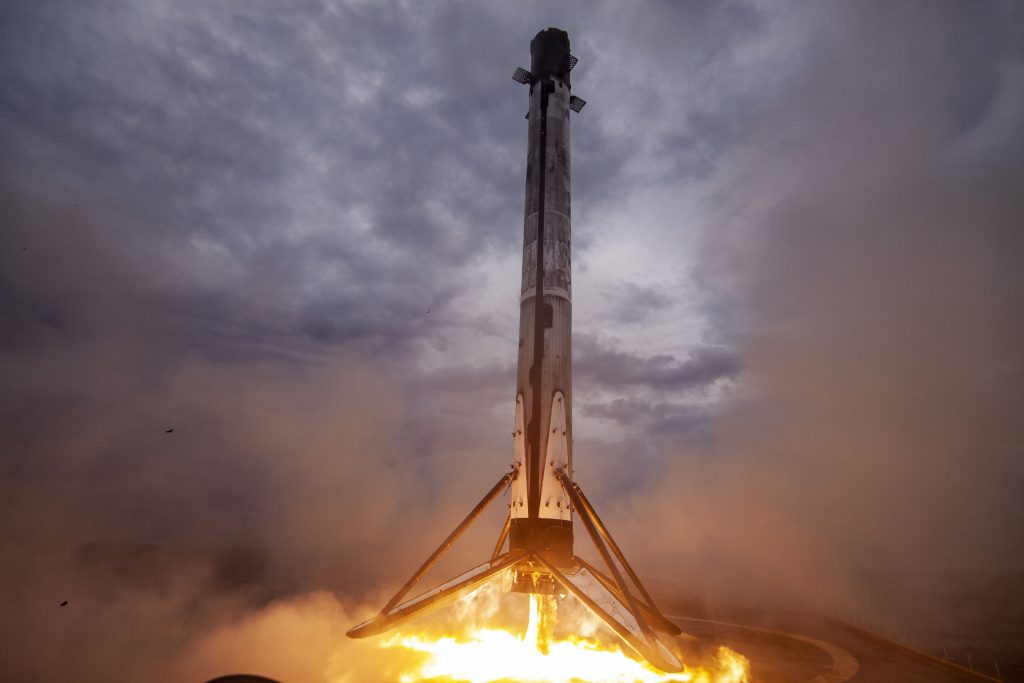Featured image credit: SpaceX
Liftoff Time | June 12, 2023 – 21:35 UTC |14:35 PDT |
|---|---|
Mission Name | Transporter-8, the eighth SpaceX dedicated small satellite rideshare mission |
Launch Provider | SpaceX |
Customer | Numerous |
Rocket | Falcon 9 Block 5 B1071-9; 87.09-day turnaround |
Launch Location | Space Launch Complex 4 East (SLC-4E), Vandenberg Space Force Base, California, USA |
Payload mass | Approximately, 5,000 kg (~11,100 lb) |
Where did the spacecraft go? | Approximately, a circular ~530 km (~330 mi) Sun-synchronous orbit (SSO) at ~97.5° inclination |
Did they attempt to recover the first stage? | Yes |
Where did the first stage land? | Landing Zone 4 (LZ-4), at ~400 m (~1,300 ft) from the launch pad |
Did they attempt to recover the fairings? | The fairing halves were recovered from the water ~551 km (~340 mi) downrange by GO Beyond |
Were these fairings new? | Both of them are likely flight-proven |
This was the: | –232nd Falcon 9 launch –167th Falcon 9 flight with a flight-proven booster –173rd re-flight of a booster –39th re-flight of a booster in 2023 –200th booster landing –126th consecutive landing (a record) –41st launch for SpaceX in 2023 –44th SpaceX launch from SLC-4E –88th orbital launch of 2023 |
Where to watch | Official replay |
How Did It Go?
The Falcon 9 v1.2 Block 5 rocket by SpaceX launched its eighth dedicated mission under the Smallsat Rideshare Program, known as Transporter-8. The objective was to send a diverse range of spacecraft into orbit, provided by an array of clients. The rocket took off from Space Launch Complex 4 East (SLC-4E) at Vandenberg Space Force Base in California, USA.
After stage separation, the booster accurately maneuvered and initiated a burn to redirect its trajectory, returning to its origin. Then, touchdown of the first stage was carried out near the launch pad at Landing Zone 4 (LZ-4). Afterward, the achieved primary objective of the launch vehicle — through its second stage — was to correctly deploy the satellites and other vehicles into a Sun-synchronous orbit (SSO), at an altitude of approximately 530 km (~330 mi) with an inclination of 97.5°.
What Is Transporter-8?
To meet the demands of the New Space market, SpaceX developed the Smallsat Rideshare Program — more on it below — Transporter-8 being a part of it. This mission consisted of a flight to a SSO, where many satellites and orbital transfer vehicles (OTVs, also called space tugs) would be deployed. Additionally, there would be hosted payloads with a purpose of their own and dispensers from different providers.
This Transporter mission’s manifest has been made public by SpaceX. Typically, this is usually published only very close to the date of liftoff, with last-minute payload additions and stand-downs. However, sources had reported this mission would include OTVs from D-Orbit and Launcher. Other integration providers listed were Exolaunch, Maverick, TRL11, and Alba Orbital. Many entities provided payloads — considering both hosted ones and satellites — and we present below what is known so far.
Transporter Missions
Typically, this kind of shared mission implied waiting for a primary payload — a larger one — to be ready for launch. Then, smallsats would hitch a ride with the launcher booked for the bigger spacecraft. Consequently, these additional passengers had to make do with going into an imposed orbit whenever the large satellite was ready. As a result, these factors usually impact their on-orbit performance, unavoidable due to the established launch practices. Moreover, the cost of these rides remained mostly prohibitive for small entities like startups or educational institutions.
Contrary to what was back then believed, SpaceX realized that lowering costs, offering more frequent launches, and attempting to loft spacecraft to more convenient orbits, the smallsat segment of the market could prosper.
Thus, in 2019, the firm announced the offering of rideshare flights aboard its Falcon 9 for such customers, addressing their needs. In effect, these flights would come in two different ways: sharing the room inside the fairing on Starlink missions, or through dedicated rideshare missions named Transporter. Both options are part of the Smallsat Rideshare Program.
Moreover, leveraging Falcon 9’s mass to orbit capabilities, a rocket supporting a Transporter mission would see its payload volume subdivided. In this way, interested customers could buy a portion of it as needed, for a much more affordable price. Furthermore, these missions would be regularly scheduled, allowing better in-advance planning, regarding launch date and destination orbit. In spite of this, any payload missing launch day could re-book, paying a small additional fee.
SpaceX offers Transporter launches to low-Earth orbit (LEO), polar LEO, and — its most popular ride — to SSO. In fact, mid-inclination launches have only taken place through Starlink flights, while all past Transporter missions have been to SSO. Revisiting the same spot on Earth’s surface always at the same time of the day — offered by this type of orbit — turns it into a preferred destination.
Transporter Logistics
From the need for a particular product or service to arriving at the desired orbit and operating the spacecraft, in general many parties are involved in one of these missions. To avoid getting lost in the logistics behind the scenes of one of them, it can be thought of in a simplified manner as follows:
- Customer and spacecraft manufacturers: those interested in having a payload in space and those who provide the platform, the instruments on board, or both (basically the payload itself).
- Launch/integration service providers: those who broker rideshare flights, offer last-mile trips (via space tugs), care for meeting regulations, provide dispensers or separation systems, and so on.
- Launch provider: SpaceX, which has overall responsibility for the launch and the correct insertion into the intended deployment orbit.
This structure will be reflected in a subsequent section later in this article where payloads are listed and discussed.
Mechanical Interfaces — Plates
Apart from the logistics aspect, the company also designed specific hardware to integrate payloads. These, in fact, need an interface to the launch vehicle, provided through rideshare plates, conceptually similar to ESPA rings. Each of these plates can be arranged in these configurations: square — four plates — or hexagon — six of them. The former allows for more available volume than the latter.
In turn, the volume corresponding to each of those can be subdivided, using a quarter of the plate, half of it, or full use. These portions enable unique payload accommodations — e.g., a CubeSat dispenser — or standard ports in three different diameters, as follows.
It is worth noting that, though previously designed, these plates were first implemented on Transporter-8.
| Volume Subdivision | 8 in (~20.3 cm) | 15 in (~38.1 cm) | 24 in (~61.0 cm) |
|---|---|---|---|
| 1/4 Plate | Yes | – | – |
| 1/2 Plate | Yes | Yes | – |
| Full Plate | – | Yes | Yes |
| Full Plate XL | – | – | Yes |

Cake Topper
Yet another position to integrate payloads in a rideshare is available at the top of the plate stack. This upper mount enables spacecraft massing from 500 kg to 2,500 kg to be launched during a shared flight. If required, two of them can be placed side-by-side. In any case, because of the different disposition, a whole separate set of requirements need to be observed when flying as a cake topper.
Previous Missions
| Mission | Date & Time | Orbit | Pad |
|---|---|---|---|
| Transporter-1 | 2021-01-24 15:00 UTC | ~528 km x 97.5° | SLC-40 |
| Transporter-2 | 2021-06-30 19:11 UTC | ~538 km x 97.5° | SLC-40 |
| Transporter-3 | 2022-01-13 15:25 UTC | ~528 km x 97.5° | SLC-40 |
| Transporter-4 | 2022-04-01 16:24 UTC | ~644 km x 97.5° ~503 km x 97.5° | SLC-40 |
| Transporter-5 | 2022-05-25 18:35 UTC | ~528 km x 97.5° | SLC-40 |
| Transporter-6 | 2023-01-03 14:56 UTC | ~525 km x 97.5° | SLC-40 |
| Transporter-7 | April 15, 2023 06:48 UTC | ~500 km x 97,4° ~675 km x 98.2° | SLC-4E |
Payloads On Transporter-8
39 separation events will take place from Falcon 9’s second stage. Moreover, the company confirmed 72 payloads, including OTVs, microsats, CubeSats, a reentry capsule, and hosted payloads. A list of the payloads SpaceX is sending to space on this Transporter mission, showing type and quantity, is as follows.
| OTVs: 2 | Deployers: >15 | Satellites: 69 | Hosted: 8 |
A more detailed description is presented here:
Launcher’s Orbiter
Launcher is quite an interesting company, which developed a transfer vehicle, or other times known as “space tug.” However, as the enterprise’s name implies, they are developing their own rocket: Light. Orbiter will not only reach orbit atop SpaceX’s Falcon 9 — or other compatible rockets — but also as this small-lift launcher’s third stage.
Created with the previously mentioned dual purpose, Orbiter will be carrying a number of payloads in this mission. In itself, the spacecraft masses at 200 kg (~440 lb), while being capable of carrying payloads up to 400 kg (~880 lb). Orbiter makes use of chemical propulsion giving it a delta-v capability of 500 m/s (~1640 ft/s) burning ethane — the fuel — and N2O — the oxidizer. Because of this, this tug will be capable of carrying out maneuvers like altitude changes, plane changes, in-plane phasing, and inclination changes.
Last but not least, Orbiter can be implemented as satellite platform (bus), which confers this spacecraft even further versatility. In this flight it will, nevertheless, act as transfer vehicle under the designation “SN3,” presenting a wet mass of 223 kg (~500 lb) at launch. In addition, this is a return to flight mission, as SN1 failed to deploy its passengers during Transporter-6. This is why some of this Orbiter’s payloads are a duplicate from that time.
Payloads on Orbiter SN3
| Name | Quantity | Purpose |
|---|---|---|
| Otter Pup | 1 | MicroSat, by Starfish Space. Rendezvous tests. |
| MDQSAT-1C/D | 2 | CubeSats by Innova Space, for IoT. |
| Pleiades-Squared | 1 | Educational CubeSat by Bronco Space (Cal Poly Pomona). |
| Nightingale 1 | 1 | Hosted, a computer for a Ka band communications system. |
| TRL11 SN3 | 1 | Hosted, CubeSat deployer by TRL11. |
| Remora | 1 | Hosted payload, a guidance, navigation, and control system by Millenium Space Systems. |
Otter Pup
Attempting orbital rendezvous, the Otter Pup spacecraft developed by Starfish Space is following the path that leads to achieving a fully sustainable space. It has a mass of ~39 kg (~85 lb) and measures approximately 39x47x72 cm (~15x18x28 in), similarly to a microwave oven. After separating from the Orbiter SN3, it will repeatedly attempt to dock to it once again. When tweaked enough that this is a routine, the company can start thinking of a future where operations like satellite servicing, repositioning, and even disposal are commonplace.
D-Orbit
This aerospace company has its headquarters in Italy, where it started to develop a vehicle capable of deorbiting deceased spacecraft. Later on, it moved to the business of satellite carriers, i.e., space tugs. To this day, the firm has launched their vehicles on all of the previous Transporter missions, as well as on Starlink Group 2-5.
ION
D-Orbit’s OTV can carry up to 160 kg of satellites, being capable of accommodating spacecraft of different shapes and sizes. This means microsats and CubeSats can be transported from the launcher’s drop-off point to other altitudes or inclinations. After this trip, proprietary (DPOD, DCUBE), or third party dispensers deploy the passengers. ION is also capable of supporting hosted payloads, run from the ground as a part of the carrier itself. In this mission, the ION serial number “SCV011” is going to space.
Payloads On ION SCV011 Savvy Simon
| Name | Quantity | Purpose |
|---|---|---|
| Mission 1 | 1 | 3U CubeSat by Outpost Technologies Corporation. |
| Spei Satelles | 1 | 3U CubeSat for the Vatican. It carries a nanobook version of the pope Francis’s book, and brodcasts it. |
| Kelpie-2 | 1 | 3U CubeSat by AAC Clyde Space for Automatic Identification System data for ORBCOMM. |
| EPICHyper-2 | 1 | 6U CubeSat by AAC Clyde Space for hyperspectral data for Wyvern Inc. |
| NaviLEOTM | 1 | Hosted Global Navigation Satellite System receiver by SpacePNT. |
| ODIN-DU1 | 1 | Hosted sensor by ODIN Space; the first in a network mapping lethal sub-centimeter debris. |
| UKRI SWIMMR-1 | 1 | Hosted radiation monitor for space weather monitoring, part of UKRI’s program. |
| AlbaPod | 2 | Hosted PocketQube deployers. See Alba’s own section. |
Mission 1
Outpost Technologies Corporation will launch a 3U CubeSat, Mission 1, massing at ~4 kg (~9 lb), and roughly measuring 10x10x34 cm (~4x4x13 in) aboard D-Orbit’s ION SCV011. This time, the satellite will only test systems such as communications, power, avionics, and flight computer. However, the company goes after the goal of operting the first reusable satellite, hopefully in a near future.
Exolaunch
The Germany-based company offers a series of services, from payload integration, to deployment, and mission management. In order to provide them, Exolaunch developed products such as separation hardware, CubeSat deployers, payload port adapters, deployment sequencers, and it is projecting an OTV named Reliant. Notably, the firm has all previous Transporter missions under its extensive flight expertise.
Deployment Systems
In order to better fit customers’ needs, Exolaunch may assign one or many of its deployment systems. These include:
- CarboNIX: this is a shock-free separator system capable of handling microsats massing in the range of 10 kg to 250 kg. To ensure this, different standard sizes are offered, as well as customization. 12 CarboNIX were used in Transporter-8.
- EXOpod: flying since 2017, these deployers have evolved to host all sorts of cubesat sizes, from 0.25U all the way up to 16U, allowing, in addition, for some combination. 5 EXOpods were used during this mission.
- EXOport: these multiport adapters enable the use of one port on a rideshare plate for a whole CubeSat cluster. A combination of the previous two systems can be used for satellite deployment. No EXOport was used this time, and SpaceX’s Rideshare Plates were used instead.
Payloads Integrated by Exolaunch
The company is flying for the 11th time with SpaceX, making this one its 21st overall mission. In particular, his time, aboard the Falcon 9, Exolaunch is integrating 32 small satellites for 11 customers from all over the world.
| Name | Quantity | Purpose |
|---|---|---|
| DROID.001 | 1 | 32 kg (~70 lb) microsatellite by Turion Space Corp. |
| EIVE | 1 | 6U CubeSat for experimental E-band communictions by University of Stuttgart. |
| SpaceBEE | 12 | 0.25U CubeSats for M2M/IoT communications by Swarm Technologies. |
| LEMUR-2 | 3 | 6U CubeSats by Spire, one for OroraTech. |
| ÑuSat 40-43 | 4 | Mark V, ~40 kg (~90 lb) microsatellites by Satellogic, for Earth observation. |
| ICEYE | 4 | SAR Earth observation minisatellites (bus’ mass ~150 kg or ~330 lb) for ICEYE US. |
| AII-DELTA | 1 | Unknown. |
| GEI-SAT | 1 | 16U CubeSat precursor for a methane detection and quantification constellation by Satlantis. |
| Ayris-1/2 | 2 | Unknown. |
| MuSat-1 | 1 | 59 kg (~130 lb) climate monitoring microsatellite for Muon Space. |
| AFR-1 | 1 | 80 kg (~180 lb) wide-swath imaging microsatellite for Azista BST Aerospace. |
| Grégoire | 1 | Demo satellite for Aerospacelab, probably Earth observation. |
DROID.001
In this case, Turion Space Corp. is launching a 32 kg satellite built on NanoAvionics’ MP42 bus, which will carry out confidential imagery tests. In fact, this lines up with the company’s plans of selling space situational awareness services, i.e. knowing “where is what” up in space. In the future, DROID satellites could conduct inspection of other in-orbit assets during fly-bys, as well as in a dedicated manner. Finally, orbit relocation and deorbiting services will be available.
Maverick Space Systems
Offering mission engineering and launch-related services, this US private company serves both commercial and government clients, who can be domestic or international. It was founded in 2019, and since then it took part in, at least, the first two Transporter missions, and the last one in April. The firm developed a family of CubeSat dispensers named Mercury, as well as other payload aggregation hardware for rideshare missions.
Payloads Integrated by Maverick
| Name | Quantity | Purpose |
|---|---|---|
| FOSSASat FEROX | 4 | IoT PocketQubes by FOSSA Systems |
| GHOSt-3 | 1 | Hyperspectral Earth observation microsatellites for oil pipe leak monitoring, by Orbital Sidekick. |
| MISR-A/B | 2 | Intelligence, surveillance, and reconnaissance CubeSats for the DoD. |
| XVI | 1 | Millitary communications CubeSat by L3Harris for the DoD. |
| Tiger-4 | 1 | 6U IoT CubeSat for OQ Technologies by NanoAvionics. |
| Tomorrow-R2 | 1 | 85 kg (~190 lb) microsatellite by Astro Digital for Tomorrow.io. |
FOSSA Systems
Initially founded in 2018 as a non-profit, FOSSA Systems is the Spain-based company that developed and manufactured the innovative PocketQubes flying aboard this Transporter. Julián Fernández, FOSSA’s CEO was 16 years old when he kicked this project off, and his dream was to get to space in the most accessible way. Since then, the company has grown to employing about 20 collaborators, having a constellation of 13 satellites in orbit, and pursuing commercial activities in line with Julián’s vision: to democratize access to space and promoting internet of things (IoT) communications.
That is, FOSSA Systems nowadays aims to provide the mentioned IoT services through their very small (PocketQube), very affordable satellites (around €10,000 to €20,000 each). At this point, it is worth noting that a PocketQube of 1P is 5x5x5x cm (~2x2x2 in) in size, and 0.25 kg (~0.6 lb) in mass. Further, these can be scaled up, obtaining sats of 2P, 3P, and so on.
These use low power communications to relay low volumes of data, such as the temperature inside a refrigerated truck’s chamber, the GPS position of cattle animals, the optimization of street lighting, and so on. In brief, tiny bits of very specific information that are vital for the business in question.
Additionally, FOSSA provides PocketQube platforms for customers interested in having communications and observation tiny satellites, or constellations of them. Not only that, because they also develop and manufacture ground infrastructure to make use of these very small spacecraft. Finally, the company also offers launch brokerage and integration services.
FOSSASat FEROX
On this occasion, FOSSA launched four of their brand new satellites: the FOSSASat FEROX. Therefore, this mission marks the beginning of a new constellation for the company, as well as demonstrates the new design for a second batch expected later this year. The newcomers feature capabilities similar to those of bigger 6U to 12U CubeSats, in spite of being considerably smaller, “lighter” (having less mass), and cheaper, while supporting fields like communications, IoT, and signal intelligence.
Particularly, these four FEROX are expected to go through their commissioning phase, and then start relaying telemetry information on their subsystems and hosted experiments. Presently, the former provide LoRa IoT connectivity, while the latter is a camera for Earth observation downlinking low resolution images in a distributed fashion. This is all achieved through a Starlink-like, flat, design with a size of 2.5x20x60 cm (~1x8x24 in), massing at 2 kg (~4 lb). In the future, FOSSA will offer such IoT connectivity with a constelation of 80 satellites
Alba Orbital
Focused on PocketQube design, manufacturing, and deployment, the Scottish Alba Orbital is a thriving start-up. As a launch broker, the company has already flown on vehicles like the Atlas V, the Electron, and the Falcon 9. And because of these satellites being very small, they need to be arranged in clusters, so they travel to space in groups. Presently, Alba Cluster 7 is expected to be aboard this Transporter mission.
Albapods are the PocketQube dispensers designed by this firm, allowing them to deploy up to 96P of spacecraft. These can be composed of tiny satellites of 1P, 1.5P, 2P, or 3P, which means a full deployment could very well place into orbit a whole constellation at once.
Payloads Integrated By Alba Orbital
This time, Alba Orbital is integrated on D-Orbit’s ION SCV011, and the company’s customers are part of Alba Cluster 7, which uses the mentioned Albapod. As far as we know, its manifest looks approximately like the following table:
| Name | Quantity | Purpose |
|---|---|---|
| Unicorn-2I | 1 | 3P PocketQube by Alba Orbital, artificial night light monitoring. |
| Satlla-2I | 1 | 2P PocketQube by Ariel University, free space optical communications test. |
| Istanbul | 1 | 1P PocketQube for Hello Space, IoT. |
| ROM-2 | 1 | 1P PocketQube for RomSpace, Earth imaging. |
| MRC-100 | 1 | 3P PocketQube for Technical University of Budapest, for spectrum monitoring in the 30MHz- 2600 MHz range. |
| URESAT-1 | 1 | 1P PocketQube for AMSAT-EA, for FM and FSK communications. |
Other Payloads
| Name | Quantity | Purpose |
|---|---|---|
| W-Series 1 | 1 | Manufacturing demo satellite and re-entry capsule by Varda Space and Rocket Lab. |
| HotSat-1 | 1 | Mid-wave infrarred (MWIR) imaging satellite for SatVu by Surrey Satellite. |
| Skykraft-3 | 5 | 300 kg (~660 lb) stack of communictions microsatellites by Skykraft. Possibly for air traffic control. |
| Blackjack Aces-1 to -4 | 4 | Unknown, by Lockheed Martin. |
| QPS-SAR-6 AMATERU-III | 1 | SAR imaging ~100 microsatellite by iQPS. |
| Runner-1 | 1 | 90 kg (~200 lb) imaging microsat by Terran Orbital and Israeli ISI, for the Chilean Air Force. |
W-Series 1
For years, in-space manufacturing has been done on the International Space Station (ISS), though experimental and tended by humans. W-Series 1, however, veers away from that, as it aims at getting into orbit, producing pharmaceuticals, and sending them back to Earth. It will still be a demonstration mission, but one with the goal of enabling future space factories. In order to achieve that, Varda Space Industries teamed up with Rocket Lab to develop a spacecraft with the required capabilities.
By Rocket Lab
Basically, the latter provides their Photon satellite platform that previously flew on missions like I Can’t Believe It’s Not Optical, They Go Up So Fast — in its LEO version — and CAPSTONE — in its deep-space version. These are in essence the third stage of the Electron rocket, or kick stage, largely modified to supply a payload, i.e. Varda’s capsule, with communications, propulsion, maneuverability, guidance, and energy.
By Varda
On the other hand, Varda developed a two-module spacecraft: one for manufacturing, one for reentry. Altogether, it masses at 120 kg (~270 lb). Though this time the company will attempt to produce small molecules drugs, the broader idea is to benefit from the microgravity environment. More precisely, Varda intends to obtain products which are possible to create with certain properties, or to specific standards, only if such conditions are met. Particularly, some pharmaceutical formulations are less efective, or even impossible to achieve on our planet.
The Mission
The W-Series 1 spacecraft will complete some steps, in order to fullfil its mission. In the first place, it will travel to space on board Falcon 9’s second stage. After that, it will detach from it and correctly position itself on orbit. Subsequently, in-space manufacturing will take place in the corresponding module, while storing the resulting product into the re-entry one. Once this process finishes, Photon will make sure the latter module follows a re-entry trajectory after separation from the rest of the spacecraft. Finally, the capsule will touch down at the Utah Test and Training Range, after hypersonic flight and parachute descent.
As far as publicly known, three further W-Series flights will happen in the near future.
What Is Falcon 9 Block 5?
The Falcon 9 Block 5 is SpaceX’s partially reusable two-stage medium-lift launch vehicle. It consists of a reusable first stage, an expendable second stage, and, when in payload configuration, a pair of reusable fairing halves.
First Stage
The Falcon 9 first stage contains 9 Merlin 1D+ sea-level engines. Each engine uses an open gas generator cycle and runs on RP-1 and liquid oxygen (LOx). Each engine produces 845 kN of thrust at sea level, with a specific impulse (ISP) of 285 seconds, and 934 kN in a vacuum with an ISP of 313 seconds. Due to the powerful nature of the engine, and the large amount of them, the Falcon 9 first stage is able to lose an engine right off the pad, or up to two later in the flight, and be able to successfully place the payload into orbit.
The Merlin engines are ignited by triethylaluminum and triethylborane (TEA-TEB), which instantly burst into flames when mixed in the presence of oxygen. During static fire and launch the TEA-TEB is provided by the ground service equipment. However, as the Falcon 9 first stage is able to propulsively land, three of the Merlin engines (E1, E5, and E9) contain TEA-TEB canisters to relight for the boost back, reentry, and landing burns.
Second Stage
The Falcon 9 second stage is the only expendable part of the Falcon 9. It contains a singular MVacD engine that produces 992 kN of thrust and an ISP of 348 seconds. The second stage is capable of doing several burns, allowing the Falcon 9 to put payloads in several different orbits.
SpaceX is currently flying two different versions of the MVacD engine’s nozzle. The standard nozzle design is used on high-performance missions. The other nozzle is a significantly shorter version of the standard, decreasing both performance and material usage; with this nozzle, the MVacD engine produces 10% less thrust in space. This nozzle is only used on lower-performance missions, as it decreases the amount of material needed by 75%. This means that SpaceX can launch over three times as many missions with the same amount of Niobium as with the longer design.
For missions with many burns and/or long coasts between burns, the second stage is able to be equipped with a mission extension package. When the second stage has this package it has a grey strip, which helps keep the RP-1 warm, an increased number of composite-overwrapped pressure vessels (COPVs) for pressurization control, and additional TEA-TEB.
Falcon 9 Booster
The booster supporting the Transporter-8 mission is B1071-9; as the name implies, the booster had flown eight previous times. The booster’s designation changed to B1071-9 upon successful landing.
| B1071’s previous missions | Launch Date (UTC) | Turnaround Time (Days) |
|---|---|---|
| NROL-87 | February 2, 2022 20:27 | N/A |
| NROL-85 | April 17, 2022 13:13 | 73.70 |
| SARah 1 | June 18, 2022 14:19 | 62.05 |
| Starlink Group 3-2 | July 22, 2022 17:39 | 33.14 |
| Starlink Group 4-29 | October 03, 2022 23:56 | 73.26 |
| SWOT | December 16, 2022 11:46 | 71.52 |
| Starlink Group 2-6 | January 31, 2023 16:15 | 46.19 |
| Starlink Group 2-8 | March 17, 2023 19:26 | 45.13 |
| Transporter-8 | June 12, 2023 21:35 | 87.09 |
Following stage separation, the Falcon 9 conducted three burns. These burns allow it to softly touch down the booster on SpaceX’s Landing Zone 4 (LZ-4).
Falcon 9 Fairings
The Falcon 9’s fairing consists of two dissimilar reusable halves. The first half (the half that faces away from the transport erector) is called the active half, and houses the pneumatics for the separation system. The other fairing half is called the passive half. As the name implies, this half plays a purely passive role in the fairing separation process, as it relies on the pneumatics from the active half.
Both fairing halves are equipped with cold gas thrusters and a parafoil which are used to softly touch down the fairing half in the ocean. SpaceX used to attempt to catch the fairing halves, however, at the end of 2020 this program was canceled due to safety risks and a low success rate. On Transporter-8, SpaceX successfully recovered the fairing halves from the water with their recovery vessel GO Beyond.
In 2021, SpaceX started flying a new version of the Falcon 9 fairing. The new “upgraded” version has vents only at the top of each fairing half, by the gap between the halves, whereas the old version had vents placed spread equidistantly around the base of the fairing. Moving the vents decreases the chance of water getting into the fairing, making the chance of a successful scoop significantly higher.
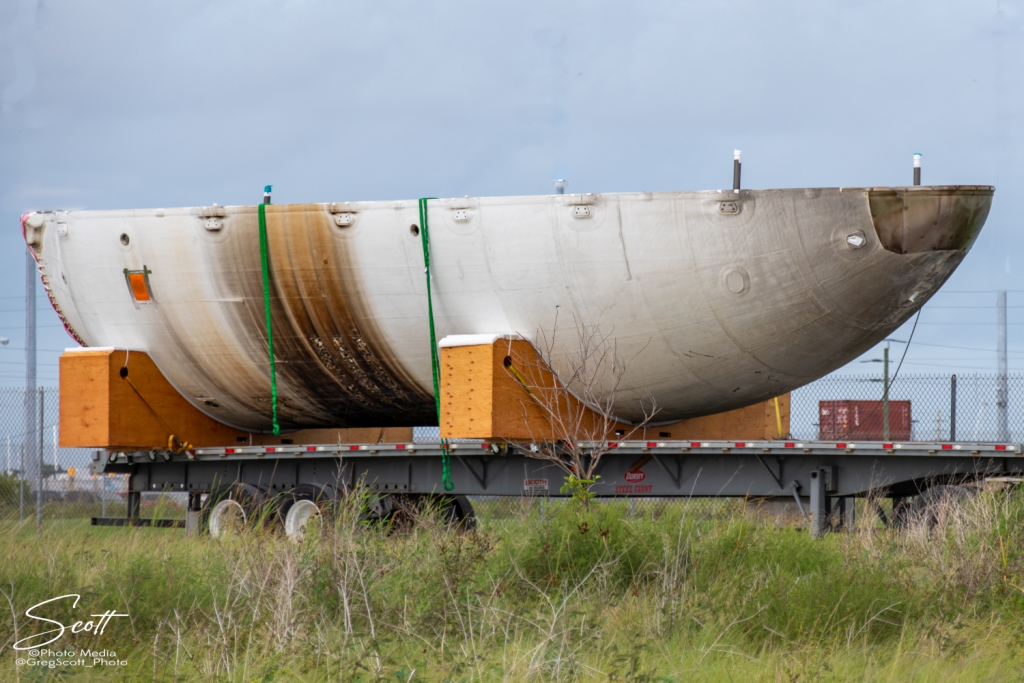

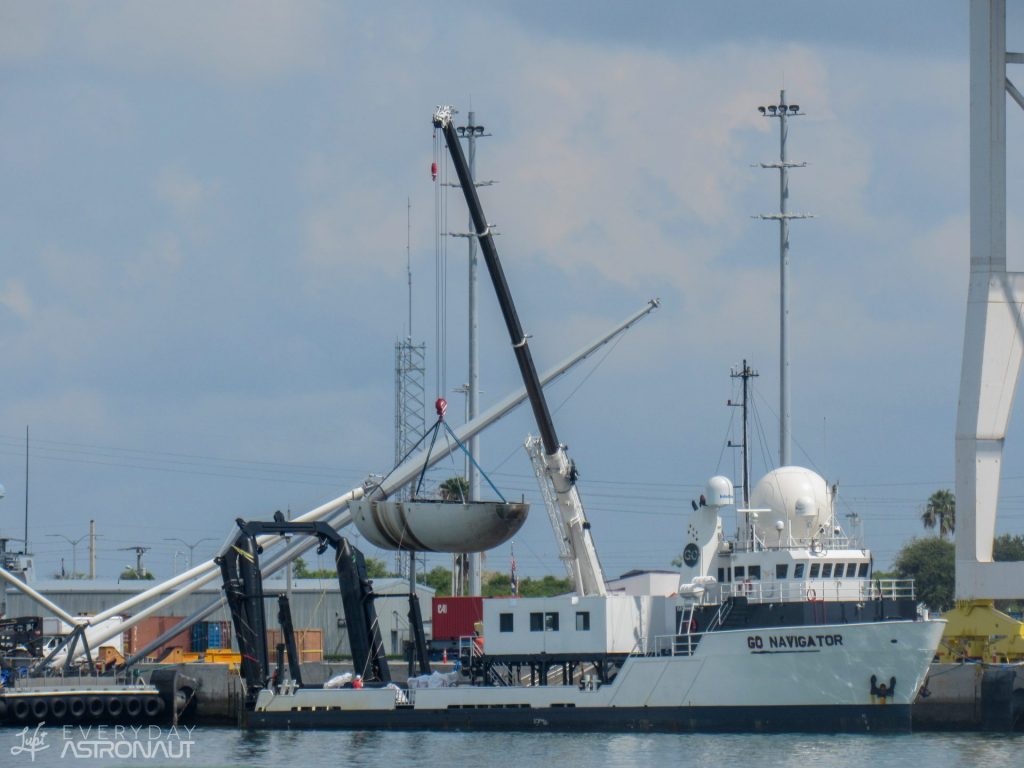
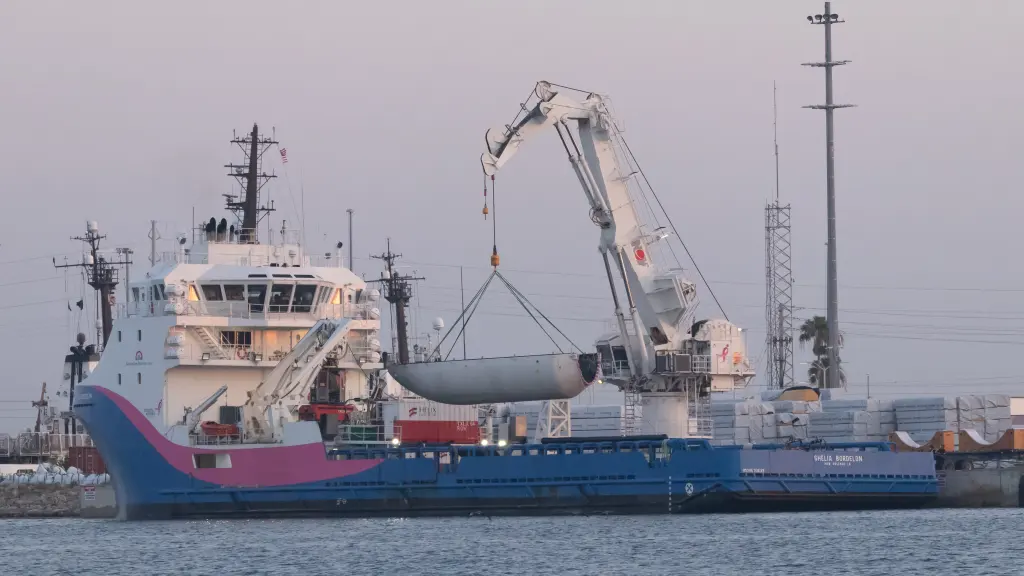
Transporter-8 Countdown
All times are approximate
| HR/MIN/SEC | EVENT |
|---|---|
| 00:38:00 | SpaceX Launch Director verifies go for propellant load |
| 00:35:00 | RP-1 (rocket grade kerosene) loading underway |
| 00:35:00 | 1st stage LOX (liquid oxygen) loading underway |
| 00:16:00 | 2nd stage LOX loading underway |
| 00:07:00 | Falcon 9 begins engine chill prior to launch |
| 00:01:00 | Command flight computer to begin final prelaunch checks |
| 00:01:00 | Propellant tank pressurization to flight pressure begins |
| 00:00:45 | SpaceX Launch Director verifies go for launch |
| 00:00:03 | Engine controller commands engine ignition sequence to start |
| 00:00:00 | Falcon 9 liftoff |
Launch, and Landing
All Times Approximate
| HR/MIN/SEC | EVENT |
|---|---|
| 00:01:05 | Max Q (moment of peak mechanical stress on the rocket) |
| 00:02:14 | 1st stage main engine cutoff (MECO) |
| 00:02:18 | 1st and 2nd stages separate |
| 00:02:26 | 2nd stage engine starts (SES-1) |
| 00:02:31 | 1st stage boostback burn begins |
| 00:02:56 | Fairing deployment |
| 00:03:25 | 1st stage boostback burn ends |
| 00:06:17 | 1st stage entry burn begins |
| 00:06:32 | 1st stage entry burn ends |
| 00:07:25 | 1st stage landing burn begins |
| 00:07:42 | 1st stage landing |
| 00:08:24 | 2nd stage engine cutoff (SECO-1) |
| 00:56:52 | 2nd stage engine starts (SES-2) |
| 00:56:55 | 2nd stage engine cutoff (SECO-2) |
Deployment
All Times Approximate
| HR/MIN/SEC | EVENT |
| 00:59:59 | FOSSASAT-FEROX deploys, manifested by Maverick Space Systems |
| 01:00:31 | AII-DELTA deploys, manifested by Exolaunch |
| 01:00:44 | GEISAT deploys, manifested by Exolaunch |
| 01:00:54 | Ayris-1 deploys, manifested by Exolaunch |
| 01:01:06 | EIVE deploys, manifested by Exolaunch |
| 01:01:10 | Ayris-2 deploys, manifested by Exolaunch |
| 01:01:20 | LEMUR 2 EMBRIONOVIS deploys, manifested by Exolaunch |
| 01:01:29 | MISR-A deploys, manifested by Maverick Space Systems |
| 01:02:41 | LEMUR 2 NAZIYAH deploys, manifested by Exolaunch |
| 01:02:52 | LEMUR 2 AADAM-ALIYAH deploys, manifested by Exolaunch |
| 01:03:13 | Swarm Spacebees deploy, manifested by Exolaunch |
| 01:03:23 | Droid.001 deploys, manifested by Exolaunch |
| 01:03:39 | XVI deploys, manifested by Maverick Space Systems |
| 01:03:51 | MISR-B deploys, manifested by Maverick Space Systems |
| 01:04:03 | Tiger-4 deploys, manifested by Maverick Space Systems |
| 01:04:17 | NewSat 40 deploys, manifested by Satellogic |
| 01:04:31 | NewSat 41 deploys, manifested by Satellogic |
| 01:05:56 | NewSat 43 deploys, manifested by Satellogic |
| 01:06:07 | NewSat 42 deploys, manifested by Satellogic |
| 01:06:35 | MuSat-1 satellite deploys, manifested by Exolaunch |
| 01:07:57 | AFR-1 deploys, manifested by Exolaunch |
| 01:08:52 | Tomorrow-R2 deploys, manifested by Maverick Space Systems |
| 01:09:43 | Grégoire deploys, manifested by Exolaunch |
| 01:10:42 | 1st ICEYE satellite deploys, manifested by Exolaunch |
| 01:11:48 | Orbiter SN3 deploys, manifested by Launcher |
| 01:12:54 | 2nd ICEYE satellite deploys, manifested by Exolaunch |
| 01:14:43 | 3rd ICEYE satellite deploys, manifested by Exolaunch |
| 01:15:47 | HotSat-1 deploys, manifested by SatVu |
| 01:16:55 | 4th ICEYE satellite deploys, manifested by Exolaunch |
| 01:17:17 | Skykraft-3 deploys, manifested by Skykraft |
| 01:17:59 | GHOSt-3 deploys, manifested by Maverick Space Systems |
| 01:19:04 | Blackjack Aces-2 deploys, manifested by Lockheed Martin Corporation |
| 01:19:30 | QPS-SAR-6 AMATERU-III deploys, manifested by iQPS |
| 01:19:50 | Runner-1 deploys, manifested by Terran Orbital |
| 01:20:16 | ION SCV-011 Savvy Simon deploys, manifested by D-Orbit |
| 01:20:39 | Blackjack Aces-4 deploys, manifested by Lockheed Martin Corporation |
| 01:21:33 | Blackjack Aces-1 deploys, manifested by Lockheed Martin Corporation |
| 01:22:38 | W-Series 1 deploys, manifested by Varda |
| 01:24:48 | Blackjack Aces-3 deploys, manifested by Lockheed Martin Corporation |


